Introduction
The BESTest (Building Energy Simulation Test) defines different types of building. These differ in construction structure, e.g. with light or heavy building mass. Subsequently, individual effects are tested with different variants. Here, for example, the cooling and heating performance is determined. The BESTest serves as a standard method for the evaluation of energetic building simulation programs.
The validation procedure shows similarities to the complex case of ISO 13791. This test case also lacks intermediate results, but the individual test cases are constructed in such a way that only certain model influences are applied. For example, there is the same test case without and with conditioning. The validation methodology used is suitable for the test cases in SimQuality because models can be constructed incrementally and differences between model variants are clearly reflected in the results.
Detailed View
ASHRAE defines two test series for building/room validation. These are referred to as „Case“. The test series are divided into a light space (Case 600 series) and a medium space (Case 900 series).
Within each Case, for conditioned systems, the maximum heating and cooling capacity and the annual energy demand of heating and cooling are considered. For the non-conditioned systems, the respective space is exposed to the default climate in a free-swinging manner. Maximum and minimum room temperatures are compared with time as well as annual mean temperatures.
An overview of the cases can be seen in the following figure.
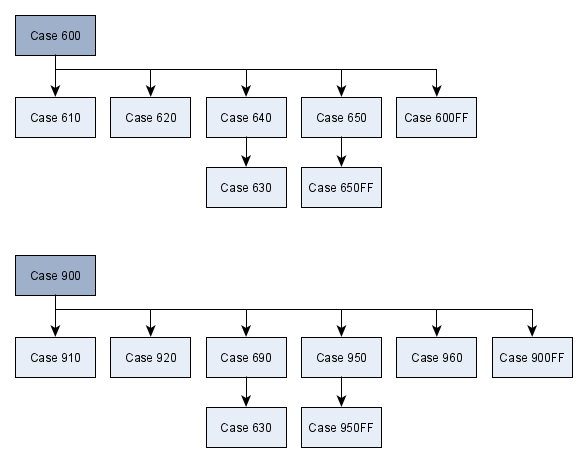
Case Descriptions
Case 600 and Case 900
The Case 600/900 defines a one-room model. The building components (walls, floor, ceiling, windows) are defined and considered with the climate data of the Denver location. The two windows are oriented to the south. When calculating these cases, it is assumed that the following models are integrated in the building simulation program:
- Sun position calculation
- Radiation calculation on different surfaces
- Heat conduction through opaque and transparent building components with coupling to outside air or ground
- Internal loads with convective and radiative components
- Solar distribution factors in the room
- Ventilation models with infiltration
- Conditioning system for heating and cooling with set point control
Heating and cooling loads as well as the annual energy demand of heating and cooling are checked. Furthermore, the incident solar radiation on the surfaces is tested. In addition, the proportions of direct and diffuse radiation through the window are required for the windows.
Case 610 and 910
In Case 610/910, a fixed overhang above the window is defined in addition to Case 600/900.
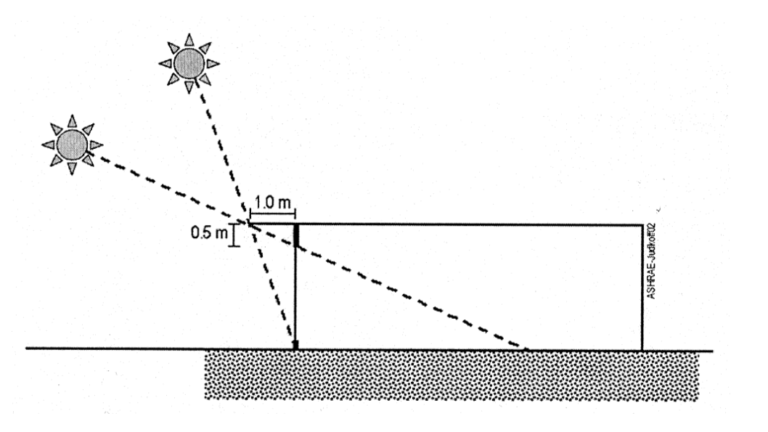
Heating and cooling loads as well as the annual energy demand of heating and cooling are tested. In addition, the shaded transmitted radiation through the window is tested.
Case 620 und 920
In Case 630/930, the west and east windows are shaded with an overhang and side fins.
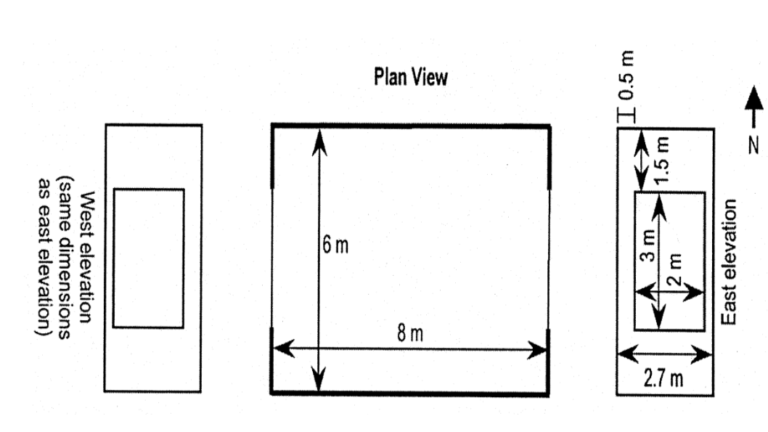
Heating and cooling loads as well as the annual energy demand of heating and cooling are tested. In addition, the unshaded transmitted radiation through the west window is tested.
Case 630 and 930
In Case 630/930, the west and east windows are shaded with an overhang and side fins.
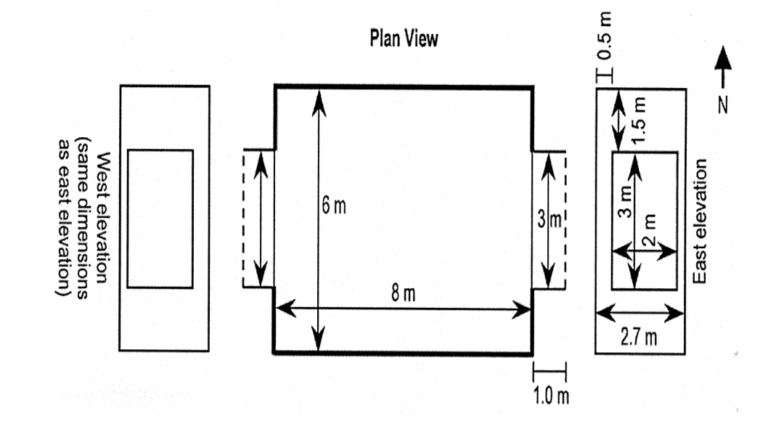
Heating and cooling loads as well as the annual energy demand of heating and cooling are tested. In addition, the shaded transmitted radiation through the west window is tested.
Case 640 and 940
Case 640/940 defines the different control strategies for heating and cooling.
Heating and cooling loads as well as the annual energy demand of heating and cooling are tested.
Case 650 and 950
Night ventilation is integrated in the Case 650/950.
Heating and cooling loads as well as the annual energy demand of heating and cooling are tested.
Case 960
In Case 960, two rooms are coupled together. The room without windows receives the components of Case 600 and the second room the components of Case 900. The room without windows is not conditioned and is therefore free-swinging. The coupled room behind it is conditioned as in Case 600.
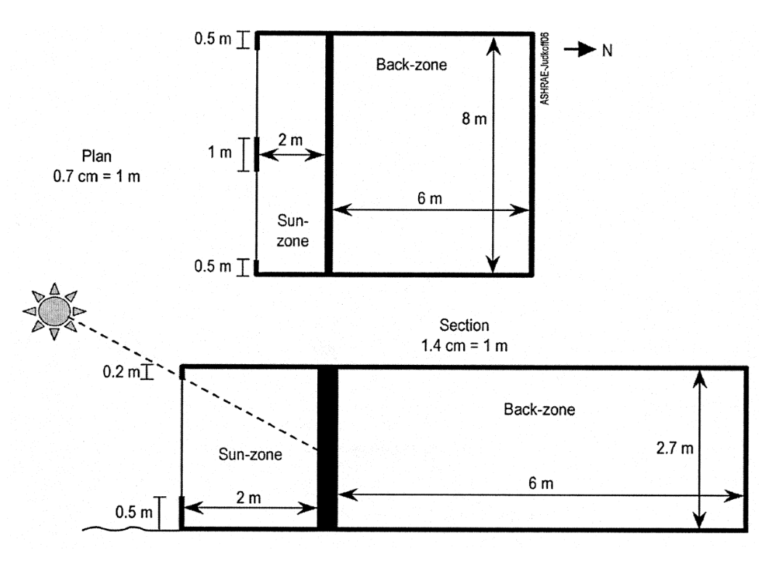
Heating and cooling loads as well as the annual energy demand of heating and cooling are checked. In addition, the temperatures are checked for the free-swinging room.
Case 600FF and 900FF
In this case, the room from Case 600 or Case 900 is considered without conditioning. Maximum and minimum room air temperatures as well as the annual mean temperatures are checked.
Case 650FF and 950FF
In this case, the room from Case 650 or Case 950 is considered without conditioning. Maximum and minimum room air temperatures as well as the annual mean temperatures are checked.
Detailed Model Test
In further cases, various effects will be isolated and examined in detail. These include heat conduction, transition coefficients, absorption factors and many more.
Discussion and Evaluation
The BESTest provides a good basis for comparing programs with each other. Analytical test cases are unfortunately not included. In addition, some very complex models are used, such as the window model with multiple glazing. An evaluation of different model approaches does not take place as for example with the diffuse radiation model isotropic/anisotropic. The comparison is always made against the „old“ software products. Since these can also have errors and a derivation from analytical sources is missing, the evaluability is not ensured throughout.
